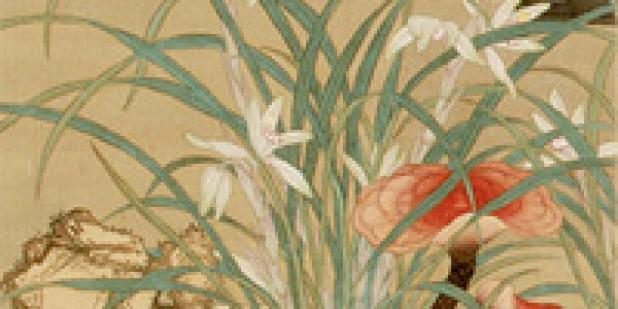Join us for a free one-day workshop for educators at the Japanese American National Museum, hosted by the USC U.S.-China Institute and the National Consortium for Teaching about Asia. This workshop will include a guided tour of the beloved exhibition Common Ground: The Heart of Community, slated to close permanently in January 2025. Following the tour, learn strategies for engaging students in the primary source artifacts, images, and documents found in JANM’s vast collection and discover classroom-ready resources to support teaching and learning about the Japanese American experience.
The Orchid in Chinese Painting
Arthur M. Sackler Gallery at the Smithsonian will host an exhibition of twenty works related to orchids in Chinese painting.
Where

Coinciding with the National Museum of Natural History's annual orchid show, the Sackler will present twenty works related to orchids in Chinese painting, ranging in date from the fifteenth to the nineteenth century.
The cymbidium orchid (Chinese: lan) has been cultivated in China for hundreds of years. Since the time of the philosopher Confucius (551–479 BCE), the cymbidium has been associated with principled, moral gentlemen whose talent and integrity go unrecognized by the powers that be. Over the centuries, various literary and philosophical works attributed other virtues to the orchid, such as friendship, loyalty, and patriotism. Because of these associations, members of the scholar-official class came to identify strongly with the flower.
The cymbidium orchid became an independent subject of Chinese painting during the Song dynasty (960–1279). Artists created meticulous depictions of the orchid employing outline and color. From the thirteenth century on, most scholar artists chose to paint the leaves and blossoms calligraphically, using only ink. Following the Mongol conquest of the Song in 1279 and the founding of the Yuan dynasty, the "ink orchid" took on strong overtones of loyalty to the fallen regime.
The subject also held appeal for certain groups that flourished at the margins of society. Monk artists belonging to the Chan school of Buddhism, for example, appropriated the ink orchid for their own purposes during the fourteenth century. Similarly, while the plant remained perennially popular among scholar artists, during the late Ming and early Qing dynasties (16th–17th century) the ink orchid also became a mainstay for a coterie of renowned courtesan painters, many of whom formed romantic liaisons with prominent scholars of the time.
Twelve of the fifteen paintings on view in The Orchid in Chinese Painting belong to the ink orchid tradition. Two scholar's rocks and three ceramic bowls used to hold the blossoming bulbs will also be displayed.
The exhibition Orchids: A View from the East, on view at the National Museum of Natural History from January 29–April 24, 2011, will also show the significance of orchids in China's cultural traditions and horticultural practices. Visit their website for more information.
Featured Articles
Please join us for the Grad Mixer! Hosted by USC Annenberg Office of International Affairs, Enjoy food, drink and conversation with fellow students across USC Annenberg. Graduate students from any field are welcome to join, so it is a great opportunity to meet fellow students with IR/foreign policy-related research topics and interests.
RSVP link: https://forms.gle/1zer188RE9dCS6Ho6
Events
Hosted by USC Annenberg Office of International Affairs, enjoy food, drink and conversation with fellow international students.
Join us for an in-person conversation on Thursday, November 7th at 4pm with author David M. Lampton as he discusses his new book, Living U.S.-China Relations: From Cold War to Cold War. The book examines the history of U.S.-China relations across eight U.S. presidential administrations.




